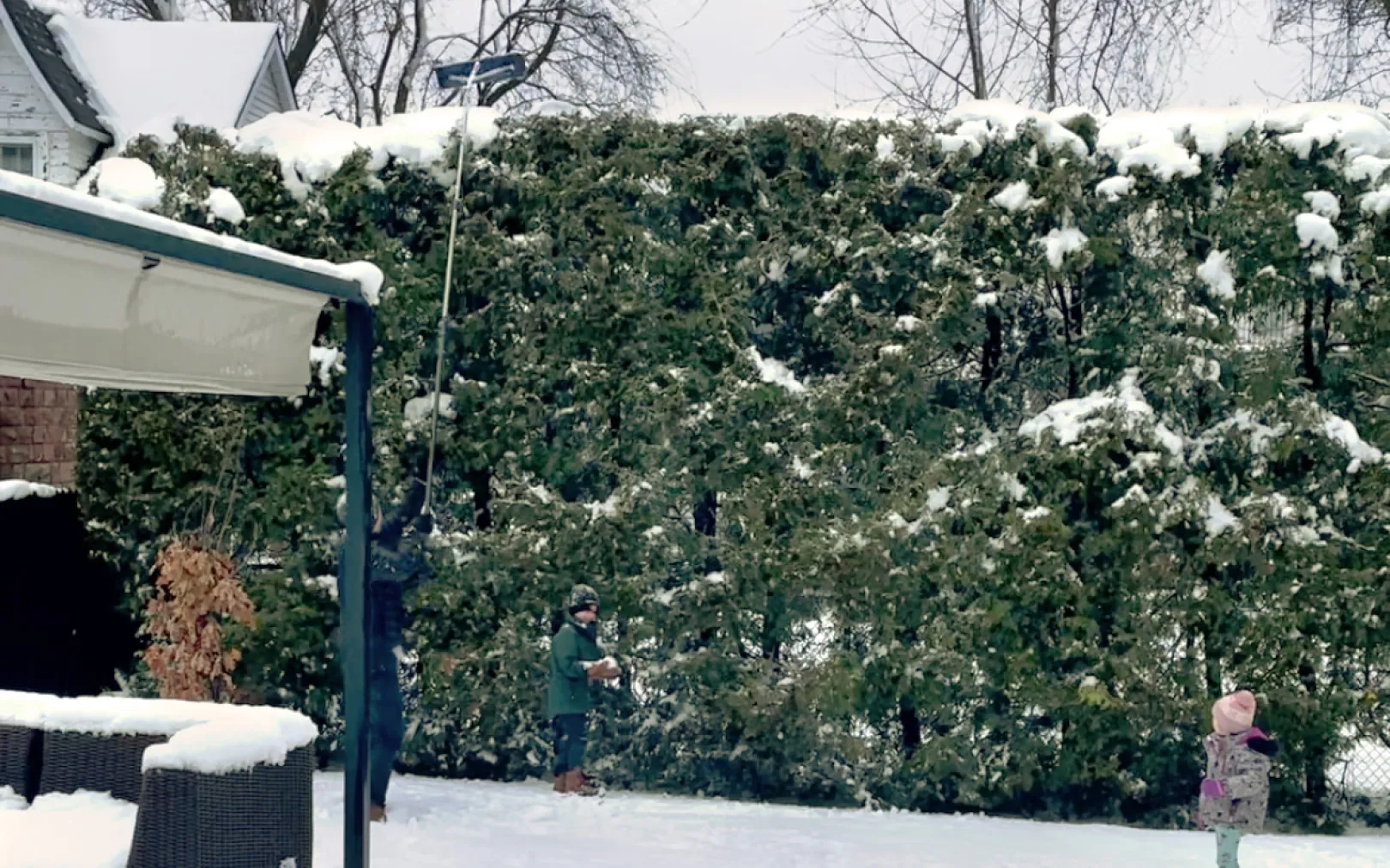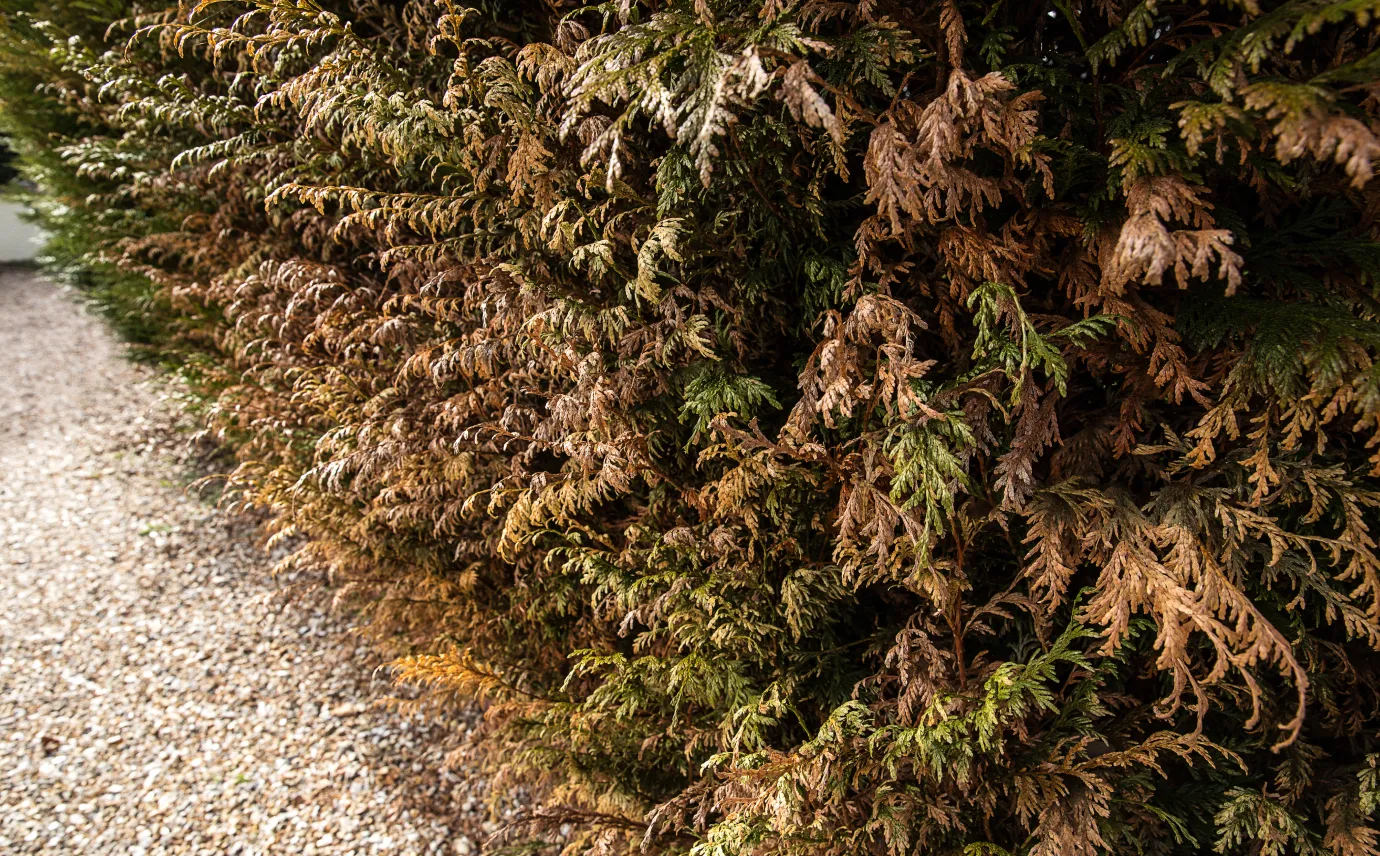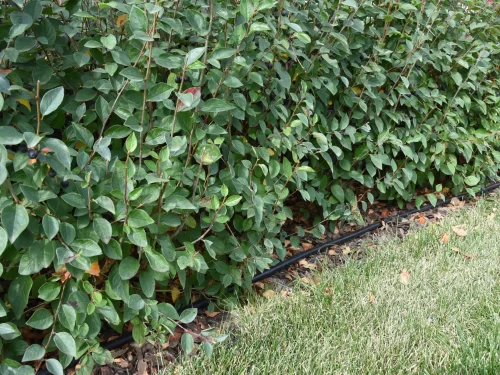Trim your hedge so it can survive Quebec winters

A strong, snow-resistant hedge
When the time comes to trim your hedge, several factors must be taken into consideration. Is this a new plantation? Has it been meticulously maintained, year after year? Does it already have a form?
Giving a nice shape to your hedge cannot be done with one stroke of a hedge trimmer! Ideally, you would cut the hedge in a conical or rounded shape, to avoid accumulations of snow on the tops and therefore, the collapse of the hedge. However, some mature hedges can become very wide. It is therefore preferable to cut the tops round so that the snow can slide more easily.
However, some customers find it more aesthetic to cut straight or square tops. It’s not impossible but be aware that it will create a plateau for the snow and your hedge will be more vulnerable to sag. It will then not be possible to give a new shape to a hedge in a single annual trimming. It will have to be modulated over several years.
Frequency
A strong and healthy hedge is a hedge that has been trimmed annually or even biannually from the 2nd or 3rd year after planting. By trimming your hedge every year, you will not only preserve its width, and therefore the size of your land, but it will also densify the foliage. This density will better support the weight of the snow.

Protect your hedge for winter
Several winter protective equipment are sold in hardware stores. If your hedge is young, fragile, or sparse, it may be worth covering it for the winter. Especially if it is near the street or a place where snow accumulates (roof overhang, snow blower depot, etc.).
For single cedars, you can use jute protection, or transparent net which are perhaps more aesthetic. While cedars planted in hedges will require snow fences, meaning pegs or posts planted in the ground at regular intervals, with or without additional textile protection depending on the model.
These protections are not only useful for snow, ice and icy rain, but will also prevent deer from devouring the bottom of your cedars, a common occurrence in the suburbs. Make sure the guards do not touch the foliage and remove them early in the spring.

What should I do when the snow has damaged my hedge during the winter?
Fresh snow has accumulated on your hedge? You can then gently remove it with a broom or a rake. If the snow has hardened or is icy, then it is recommended to wait for a mid-winter thaw before removing it to prevent broken branches and further damage to your hedge. In most cases, the hedge will return to its original shape in the spring and summer with the annual growth.
If the heavy snow has torn the branches of your cedars apart, you can tie the branches together in spring to solidify and direct the eventual growth of your open cedars. However, the trunks of young hedges are flexible and often spring back into position.
To remember
In cases where foliage has been heavily damaged by a snowplow, deer or if main branches are broken, the side foliage might not grow back.
We can consider a few solutions, depending on the case: fertilizing your hedge for the current season can strengthen its growth, installing a snow fence for the following season will limit the damage, and in some cases, you can plant a new cedar to replace the one that no longer offers the expected privacy or aesthetics.
You should know that there are also deer and hare repellents in hardware stores that use natural and ecological ingredients and that can be applied before winter.











